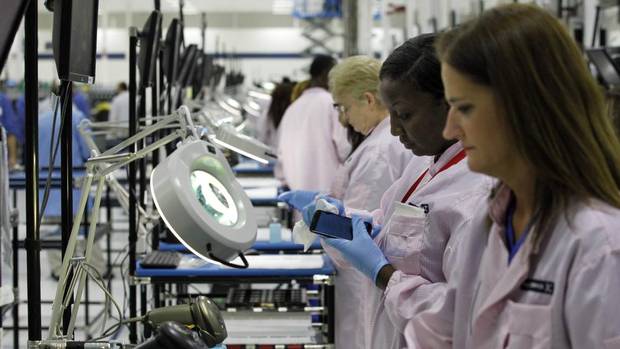U.S. Manufacturing is Back – But Can Americans Do The Job?
On the surface, evidence of the rebound is everywhere. Apple Inc., well known for its large number of factories in China, recently announced – with little fanfare – that it would soon start producing one of its Mac computer lines in the United States. In the past three years, 500,000 new manufacturing jobs have been created, and the deficit in manufacturing trade is finally starting to decline after years of sharp increases. The sector will never likely match the 17 million people it employed a couple of decades ago – employment is currently about 12 million – but at least manufacturers are finally taking on additional workers instead of posting layoff notices.
What has happened to a sector that many economists had written off? One key issue, according to Time magazine, is the shale oil and gas boom. Some U.S. manufacturers now have access to less expensive energy, while high world oil prices have made it more expensive to ship goods from low-cost plants in China and other countries in Asia.
It is not only cheap domestic energy that has encouraged some manufacturers to reconsider offshoring. For many years American manufacturers could not reduce the wage gap between the United States and developing countries. But as emerging countries such as China continue to grow, wages inevitably start to increase.
The gap between wages in China and the United States will never likely be entirely closed – currently American workers earn 7.4 times more than their Chinese counterparts – but other factors also come into play. The higher productivity of American workers compared with Chinese workers, the flexibility of the American work force, and the benefits garnered from locating production closer to customers imply that the outsourcing phenomenon may have peaked.
While the return of manufacturing to the U.S. is welcome news for American workers, the factory floor is taking on an entirely new look. The days when a teenager could drop out of school and pick up a well-paid factory job for life are gone – for good. Today’s factories have far fewer workers and many more complex machines. A lot of manufacturing jobs require at minimum a two-year tech degree, to complement skills such as welding. In the near future, the need for a four-year degree is not out of the question.
This dramatic change on the factory floor could prevent U.S. industry from taking advantage of improved domestic manufacturing conditions. Many American workers simply don’t have the skills to work in today’s modern factory. Even in an economy with an unemployment rate above 7 per cent, the Wall Street Journal has reported that manufacturers are encountering difficulties finding qualified workers to operate and repair sophisticated computerized machinery.
Education and skills training is widely considered the key element to addressing the worker shortage. But the U.S. education system has been falling behind the standards set in other developed countries; The Conference Board of Canada’s How Canada Performs: Education report card ranked the United States 11th out of 16 countries – Canada, by contrast, ranked second.
President Obama has identified education as a key to America’s future competitiveness. A failure on the part of U.S. policy makers to reform education could cause the manufacturing sector to fizzle, just when this long maligned sector is on the verge of a dramatic turnaround.



Leave a Reply
Want to join the discussion?Feel free to contribute!